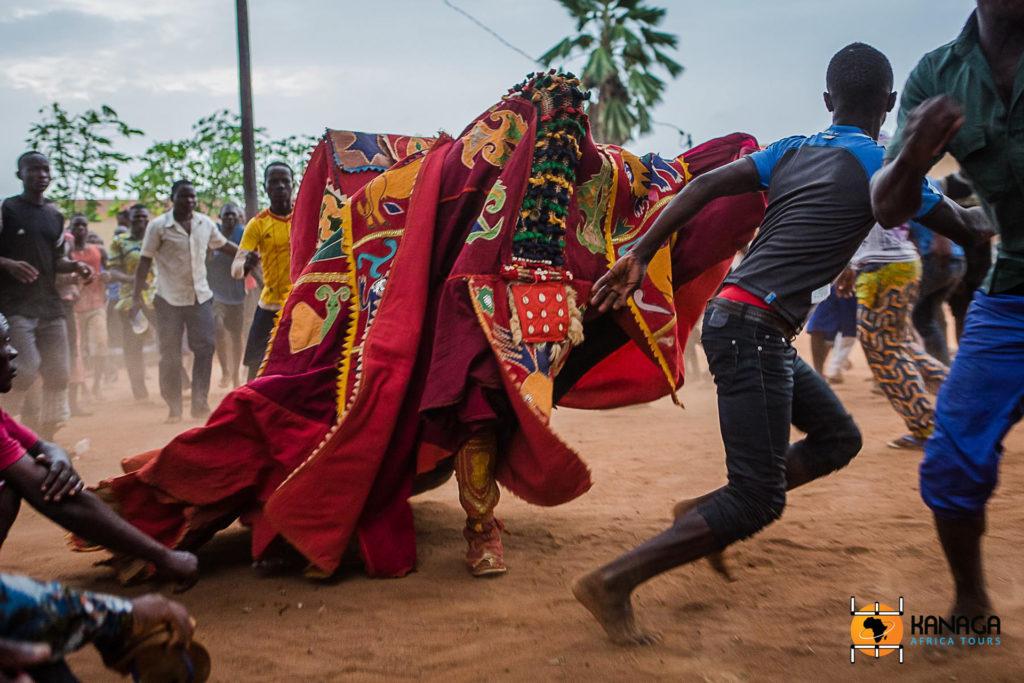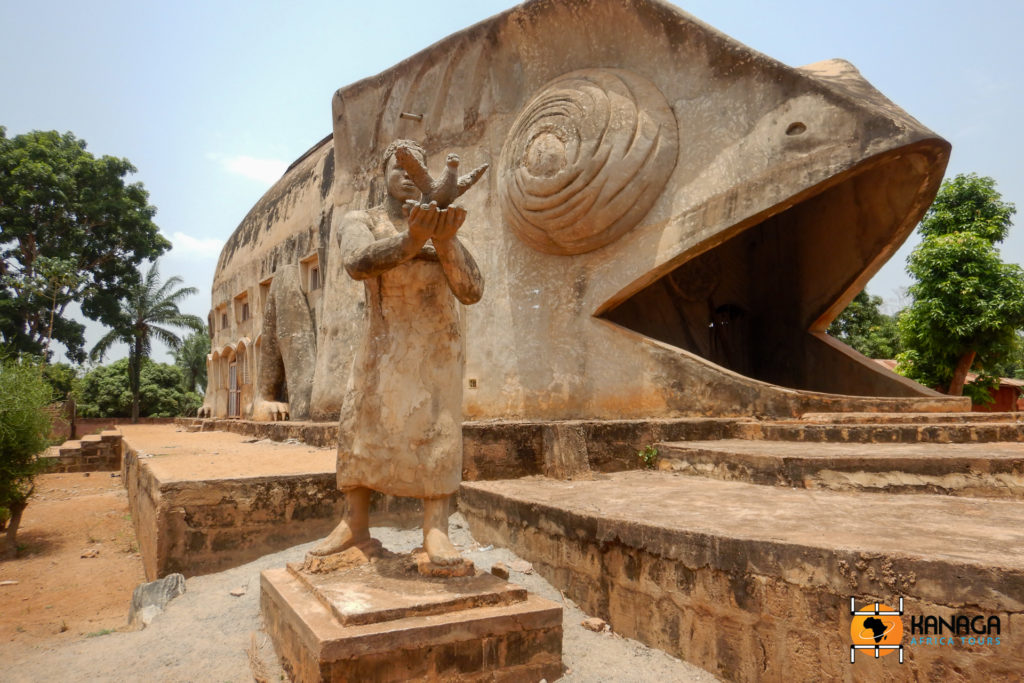© A. Pappone
Abomey is located 144 km northwest of Cotonou in the region inhabited mainly by the Adja-Fon and is a mythical place because of its historical vicissitudes.
It was the beating heart of the ruthless kingdom of Dahomey, whose kings ruled in a bloodthirsty manner, carrying out human sacrifices, wars and enslaving their enemies. They were the main collaborators in the slave trade, but also the most fervent opponents of the French colonial government, so much so that the railway between Cotonou and Parakou was designed by the colonists specifically to take power away from Abomey, passing 9 km away through Bohicon which became the new commercial centre.
The bloody history of this city is well illustrated by the fabric panels of the Musée Historique d’Abomey (UNESCO World Heritage Site), depicting bloody war scenes by the famous military corps of Amazons. The undisputed symbol of what was once royal power is the throne of Ghézo, placed over the skulls of four enemies. The museum stands on the ruins of what was the most impressive piece of architecture in West Africa, covering an area of 44 hectares, enclosed within 4 km of 10-metre high walls and surrounded by a moat. Originally there were many palaces, as each ruler had one built from scratch, but they were burnt down by King Béhazin before the Kingdom fell to French troops at the end of the 19th century. Today, the two main palaces have been restored and made accessible to visitors. They were once the seats of the two most important rulers, Ghezo and Glélé.
The visit concludes with Dahomey’s ancient craft factories, which produced the beautiful fabrics used to make royal robes and vestments. Famous are the patchwork tapestries depicting totem animals and symbols of the power and deeds of the royal families, the same ones that decorate the facades of the palaces in polychrome terracotta tiles.







